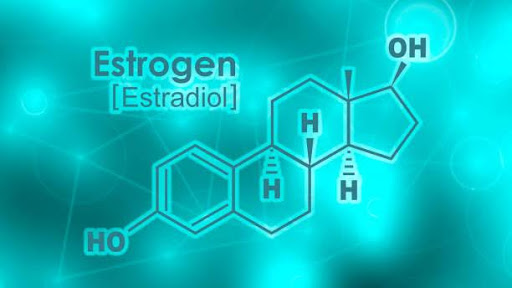Estrogen Receptor Modulators: Mechanisms and Therapeutic Applications
Estrogen receptor modulators have become a vital class of compounds in modern medicine, especially in the management of hormone-sensitive conditions such as breast cancer, osteoporosis, and menopausal symptoms. They affect estrogen receptors only in some parts of the body, so the desired treatment can be given while avoiding most negative effects. Understanding how estrogen receptor modulators function and their range of applications is essential for appreciating their impact on human health and disease management. Here, we review the ways they function, their medical benefits and the role they play in healthcare.
Understanding Estrogen Receptor Modulators

Estrogen receptor modulators are compounds that interact with estrogen receptors—specifically ERα and ERβ—to regulate estrogenic activity in tissues. Members of this receptor class are nuclear receptors and are found in large numbers in the breast, uterus, bone and brain. The key feature of estrogen receptor modulators is their tissue-selective action; they can function as agonists in some tissues and antagonists in others. Both looping and guiding give cognitive analytic therapy its main benefit.
Selective Estrogen Receptor Modulators (SERMs) and Selective Estrogen Receptor Degraders (SERDs) are two main types of these modulators. Doctors have been giving tamoxifen and raloxifene to patients and choosing fulvestrant provides another way to reduce the levels of the hormone receptor. The way each modulator works with ERs determines how cells respond and switch on genes differently in different contexts.
The Mechanism Behind Estrogen Receptor Modulators
The pharmacological action of estrogen receptor modulators is rooted in their ability to bind to estrogen receptors and either mimic or block the hormone’s natural effects. After a modulator connects to a receptor, it sets off a process that changes how the receptor associates with co-regulatory proteins. It shows if the modulator will increase or decrease the activity of estrogen in a particular organ or tissue.
For example, tamoxifen works in the breast by opposing estrogen, stopping it from causing cancer cells to grow. Yet, in these two tissues, it behaves like an agonist, increasing bone thickness and influencing how the endometrium changes. The selective action is due to the different expression levels and availability of co-regulatory molecules in various tissues, making estrogen receptor modulators highly versatile and targeted in their effects.
Clinical uses of breast cancer treatments

Estrogen receptor modulators have revolutionized breast cancer treatment, particularly for estrogen receptor-positive (ER+) tumors. Tamoxifen is still used as an important hormone treatment for women, both before and following menopause. Tamoxifen stops estrogen from encouraging breast cancer cells to grow which in turn greatly lowers the chances of the cancer returning and increases survival.
As resistance to SERMs happens, SERDs, like fulvestrant, are used. The use of fulvestrant results in the destruction of the receptor, too, providing cancer with a new way to be stopped. These therapeutic strategies underscore the importance of modulating estrogen signaling in oncology and highlight the efficacy of estrogen receptor modulators in achieving this goal.
Osteoporosis and Why it Matters
Beyond oncology, estrogen receptor modulators also play a critical role in managing postmenopausal osteoporosis. After a woman goes through menopause, her body loses estrogen which causes the bones to become weaker. Raloxifene strengthens bones and helps protect against vertebral fractures, since it works as an estrogen agonist on the bones only and not on other feminine organs.
Raloxifene spares reproductive tissues from the rapid growth that typical hormone replacement therapy can cause. Its use underscores the precision and tissue-specific benefits that estrogen receptor modulators can offer, especially in aging female populations susceptible to osteoporosis.
The Relationship Between Menopause and Cardiovascular Problems
Estrogen receptor modulators are also investigated for their potential in managing menopausal symptoms, including hot flashes, mood swings, and vaginal atrophy. SERMs represent a choice that is safer than traditional hormone replacement therapy with regards to breast and endometrial cancer risks. Because Ospemifene works much like estrogen in the vaginal lining, it helps recover the health of vaginal tissue and does not have the same cancer risks as hormone drugs do.
Furthermore, researchers are exploring the cardiovascular benefits of estrogen receptor modulators. It has long been understood that estrogen improves the health of fats in the blood and the functions of blood vessels. The use of SERMs on cholesterol and the arteries could safeguard postmenopausal women from heart problems the way estrogen does, but with less risk.
The Relationship of the Brain and Mind
Emerging studies suggest that estrogen receptor modulators might also influence brain function, particularly in relation to cognitive health and neurodegenerative diseases. Estrogen receptors exist in the hippocampus and various other areas of the brain important for memory. Having estrogenic activity seems linked to neuroprotection and changes in synaptic function.
While research in this domain is still evolving, the possibility of using estrogen receptor modulators to mitigate age-related cognitive decline or conditions like Alzheimer’s disease is gaining interest. Administration of neuroactive steroids in selective ways may assist in treatment of central nervous system problems without the usual systemic risks of estrogen.
Problems Facing Fundraising Today
Despite their broad therapeutic potential, estrogen receptor modulators also present certain challenges. People taking tamoxifen or similar SERMs for many years may have greater chances of blood clots and endometrial cancer. That’s why patients should be evaluated correctly, potential risks considered and progress watched closely to ensure safe treatment.
Looking ahead, research is focused on developing next-generation estrogen receptor modulators with improved selectivity and reduced side effects. Advancements in medicine are helping to develop compounds that act more precisely on receptors and with partner proteins in the body. Because of this discovery, new treatment options may be available for conditions that SERMs and SERDs are not addressing now.
Conclusion
Estrogen receptor modulators represent a pivotal advancement in targeted hormonal therapy, with applications extending across oncology, bone health, menopausal care, and potentially neurology. Because they only function in certain tissues, smart hormones are able to deliver precise treatment where traditional hormones cannot. As our knowledge about estrogen signaling grows through studies, we anticipate that more precise types of modulators can be developed, leading to better treatment for patients and more options for doctors. For clinicians and researchers alike, estrogen receptor modulators remain a promising tool in personalized medicine and hormone-related disease management.








